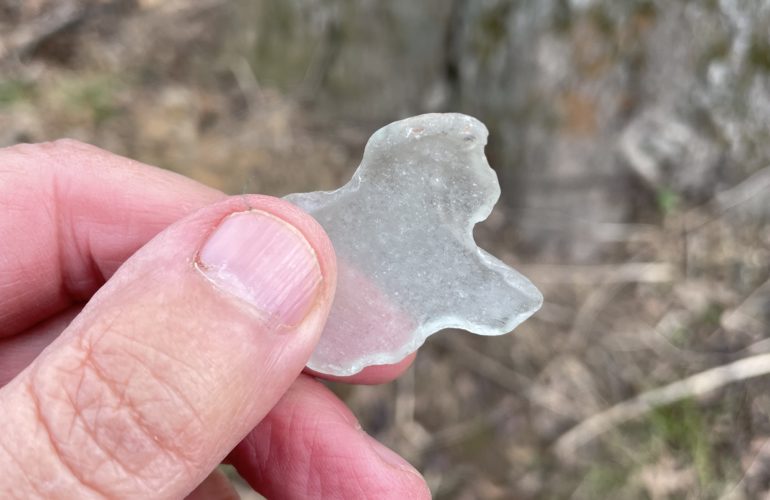
“The people have a right to clean air, pure water, and to the preservation of the natural,
scenic, historic and esthetic values of the environment. Pennsylvania’s public natural
resources are the common property of all the people, including generations yet to
come. As trustees of these resources, the Commonwealth shall conserve and maintain
them for the benefit of all the people.”
PA. Const. Art. I, Sect. 27.
Miles up the deeply incised canyon of Slate Run, there is the still barely visible trace of an old road. It’s completely overgrown, so unless you know it’s there, you’ll miss it. It leads down to a flat slab of ledge-rock and a small level terrace that occupies about a quarter acre on the banks of this famous trout stream. The terrace, like the road that leads to it, is completely overgrown with scrub, and that tangle of vines, saplings, and tall weeds hides a secret.
A close examination of a small section of eroded stream bank will reveal a clue. What at first blush seems to be an oddly shaped thin pebble, on closer inspection proves to be a piece of a glass vessel. It has been worn and tumbled by the stream so that its sharp edges are now smooth, and its formerly clear surface is opaque. It has been here since just after the Civil War. It used to be part of a quart bottle of liquor. A closer look at the bank reveals more glass, and metal too. In the late fall, when the leaves are down, you can make out small, square and rectangular alignments of rock, and some small depressions in the ground. There were buildings here.
In the last quarter of the 19th century, for just a few years, this little streamside terrace was a bustling community of immigrant men who were here to harvest timber. They worked ten or twelve hours a day, six days a week, at unrelenting and dangerous work. Not all of them made it out of the woods alive. They ate and drank in a mess hall, slept in bunkhouses, and dreamed of and saved for a better life. They had families, and the little river towns along the West Branch of the Susquehanna are still full of their descendants. They sent millions of board feet down the stream to the mills in Williamsport. The timbers and boards from those mills built homes and factories all over Pennsylvania and New York state, shored-up mine shafts, became canal locks and railroad ties. Their work helped create this country and this commonwealth.
Now there are only hidden traces of them here on the banks of Slate Run. The woods that rang with the staccato of axe blows, the rhythm of crosscut saws and the voices of men in half a dozen languages are now silent save for bird song. This abandoned logging camp connects all of us to those men, and to the hopes and dreams they brought with them to this country. It’s a place of some significance, as important in its way to our understanding of where we came from as is Gettysburg or Independence Hall.
Their story, and this place, belongs to all of us. It lies at the core of Pennsylvania’s Environmental Rights Amendment, a piece of forward-looking legislation, that also enshrined the need to look back. The legislators who wrote and passed it understood the public value of our past. They knew we grew root and branch from quiet places like this, and without these places we forget who we are.
This article was written by Joe Baker. Joe, resident of Boiling Springs, PA, is a retired Archaeologist having worked with the Pennsylvania Historical and Museum Commission and Pennsylvania Department of Transportation.
To read more posts from PPFF guest bloggers, visit our News page. Subscribe to our weekly e-blast to stay up to date on News, Events, and Blog posts!




